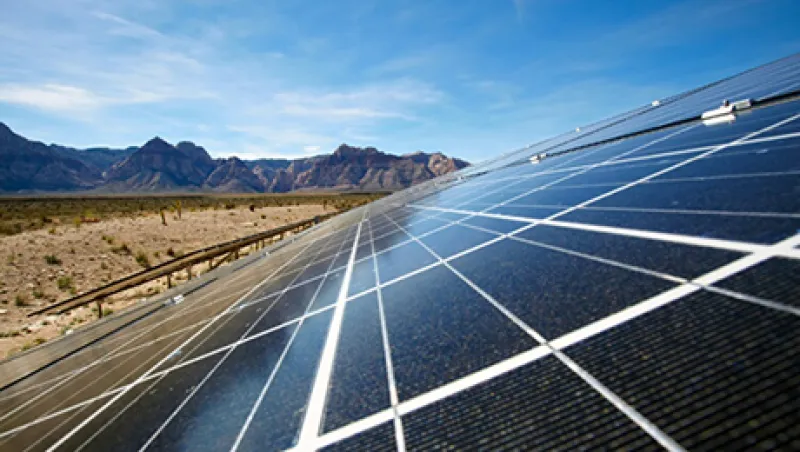The burgeoning solar power industry and the financiers specializing in asset-backed securities want to bring investors securitizations that pool together the assets of small and midsize solar developers. And they’re working to make it happen sooner rather than later, despite the fact that if solar and securitization had a Facebook relationship status, it would be “It’s complicated.”
There is potential in bundling solar assets — namely, the leases or power purchase agreements (PPAs) used to finance residential and commercial solar panel systems — because most of the hundreds of solar developers in the U.S. are still too small to access the capital markets via a solo securitization. This aspect makes developing a way to pool the assets of various small players into a single deal an attractive proposition all around. Such bundling would lower the cost of capital for the developers, provide deal flow for the banks and other financiers, and it would open up additional renewable energy opportunities for investors.
What’s standing in the way? So far, there has never been a pooled solar securitization. SolarCity is the only U.S. solar company to issue a securitization — three, to be exact — backed by PPAs with mainly residential customers. The securitization market expects more residential solo deals from large developers, and a commercial securitization is expected as well — sooner or later.
Pooled solar securitizations have been held back largely because of a lack of standardized documentation and the difficulty associated with analyzing the creditworthiness of a disparate group of developers, sources say.
“Pooling is a very short word, but it’s a very complicated concept in the securitization of any asset,” says Ronald Borod, a lawyer specializing in structured finance in the Boston office of DLA Piper. “With solar, it’s even more complicated because the rating process is very developer-centric.”
According to Borod, ratings agencies tend to want to know everything about a developer, right down to the equipment and maintenance systems it uses. Mary Rottman, president of the Solar Energy Finance Association, says, “When you talk to the ratings agencies, and when you talk to investors, they start to pull their hair out when you say, ‘Gee, it would be great to create these large pools or warehouse a bunch of these assets to do a securitization.’”
Rottman, owner and principal of Rottman-Associates, a financial consulting firm located in San Francisco, also serves as an adviser for Solar Access to Public Capital, a working group operating under the U.S. Department of Energy’s National Renewable Energy Laboratory (NREL). To address the concerns surrounding solar securitization, the group developed standardized contracts for leases and PPAs for both residential and commercial customers that were rolled out in 2013 and 2014. It also just released standards for both photovoltaic system installation and operation and maintenance (O&M) in March.
Although the standardized contracts have now been available for a year or two, it’s hard to know how many developers are using them. NREL does not yet track who has adopted them, though it does plan to implement a voluntary tracking system, according to a spokesperson from the organization. And, anecdotally, some solar developers and financiers have reported incorporating the contracts into their businesses.
Small and midsize developers have incentive to streamline paperwork — if for no other reason than it makes doing business simpler — and to meet the best-practice standards for installation and O&M. The hope is that as more of them adopt these practices, it will make credit analysis easier, and the look of horror on the faces at the ratings agencies will fade.
“We’re really doing it from the bottom up,” Rottman says. “We’re developing best practices and databases and pushing adoption.” Then, even if a company is small, without much of a track record, “you’re getting at 90 percent of the problem.”
Already, some in the field say the market may be closer to a pooled solar securitization than one might guess. Werner Nikowitz, global head of renewable energy, power and infrastructure capital markets at StormHarbour Securities in New York, says his firm has been working on such a deal and plans to issue one likely in the near future. “I am very much in favor of helping those smaller installers,” Nikowitz says. “They’re not worse than SolarCity. They’re smaller businesses that are very much dependent on their reputation.”
Get more on fixed income.




